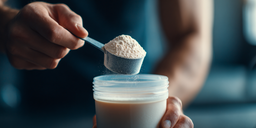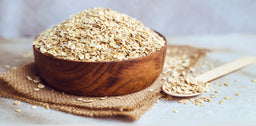
The history of diet foods (and how to really eat healthy)
The history of diet foods (and how to really eat healthy)
Let’s take a look back over the history of commercial diet foods to see how the industry has changed.
The weight loss industry is worth an estimated £2bn in the UK alone, and its value is growing every year. Commercial diets, slimming clubs, weight loss treatments, supplements and foods are just some of the products that make this industry rich.
But what exactly is the history of commercial diets, and diet foods in particular? Let’s look back at the diet food industry to see what’s changed, and how you can really eat healthy without overpriced products.
Who invented dieting?
The history of dieting is closely connected with social politics, class structure, and even the industrial revolution. Until relatively recently, the majority of people didn’t have enough to eat (and led really physical lives). Being unhealthy through obesity was only experienced by a few.
The English Doctor George Cheyne was one of the first known Dietitians, who wrote “An Essay of Health and Long Life” in 1724 after losing weight on a meat-free diet. His diet and exercise ethos was widely published as advice for any obese person.
The first well-known diet was called Banting, after its creator William Banting who published a booklet called “Letter on Corpulence, Addressed to the Public” in 1863. Banting was an undertaker and had seen plenty of people die from issues relating to obesity. The Banting diet advised meat, greens, fruit and dry wine, avoiding sugar, sweet foods, butter and starch.
Calorie counting entered the chat in 1918 after Lulu Hunt Peters published the hugely successful book “Diet and Health with a Key to the Calories”.
What is the history of diets
It’s estimated that there are now 1000+ named or otherwise commercialised weight loss diets. These include low-fat, low-carb, fasting, very low calorie, liquid diets, exclusion diets, time-restricted eating, keto, detoxing and numerous others – too many to list here.
When did diet foods start being made?
The weight loss industry isn’t just diet books and slimming clubs. Diet foods like fat-free foods, low-carb bars, meal replacement shakes are a huge part of what makes dieting lucrative for the businesses behind it.
What was the first diet food?
Lots of the earliest diets didn’t actually need any special foods – the Grapefruit diet, Cabbage Soup diet, the Lemonade diet, and early keto just relied on drastically manipulating intake of normal foods.
Slimfast launched in 1977 as a product line, making it one of the earliest examples of specific diet food products. Whilst Weight Watchers officially launched as a brand in 1963, it didn’t bring out branded food products and meals until the late 70s (when it was bought out by Heinz) – by the early 80s Weight Watchers had developed the world’s first microwavable diet meals.
The 80s and 90s were a boom time for diets and diet foods, and in 1996 the EU’s Commission Directive was created to regulate foods that were intended for use in energy-restricted diets for weight loss.
Energy bars and diet bars came to the market in the mid-80s, with PowerBar in 1986. By the mid-90s, dozens of “snack bars” marketed as healthy meal replacements were available. As the diet industry grew, so did the number of these bars and other diet foods, often being created to match the specific rules of a named diet.
Meal replacement drinks and powdered shakes had their moment in the 2000s and 2010s, with the infamous Soylent launched in 2013. Prior to Soylent there was Ensure drink, One Square Meal bar and other “meal replacement” products.
Why are diet foods unhealthy?
On the face of it, diet foods shouldn’t necessarily be healthy. Low-fat dairy could be classed as a diet food, and that has lost of health benefits. But the manufactured diet bars, shakes, and meal replacements in this article aren’t always a healthy choice. The majority of processed branded diet foods contain thickeners, gums, sugar replacements, oils and trans fats, and lack the micronutrients of natural foods.
Are all diet foods bad for you?
Manmade diet foods aren’t natural, and will never be as healthy as wholefoods in their most natural form. But all diet foods are regulated by the relevant food authorities. As such, you can eat the occasional bar or meal replacement as part of your wider food intake without worrying.
But your diet won’t be healthy if the majority of your caloric intake is from bars, shakes, meal replacements, and other manmade diet foods. You’ll be missing out on vitamins, minerals, and other micronutrients that are abundant in wholefoods, and your diet will lack variety.
How to lose weight without diet food products
1 Use a TDEE calculator to work out your total daily energy expenditure in calories
2 Make sure you take in fewer calories than you burn (the most accurate way to do this is by tracking your food and drink until you get used to it)
3 Eat enough protein (at least 1g per 1lb of bodyweight) to help keep you full and not too hungry
4 Prioritise lean protein, vegetables, wholegrains and other wholefoods for food quality
5 Spread your meals and protein out throughout the day to avoid dips in energy levels
6 Aim for an 80/20 split of healthy, whole foods and treats in order to have a sustainable diet
Check out the Gravity Fitness store for functional fitness equipment and calisthenics kit for home gyms and on the go workouts.












































